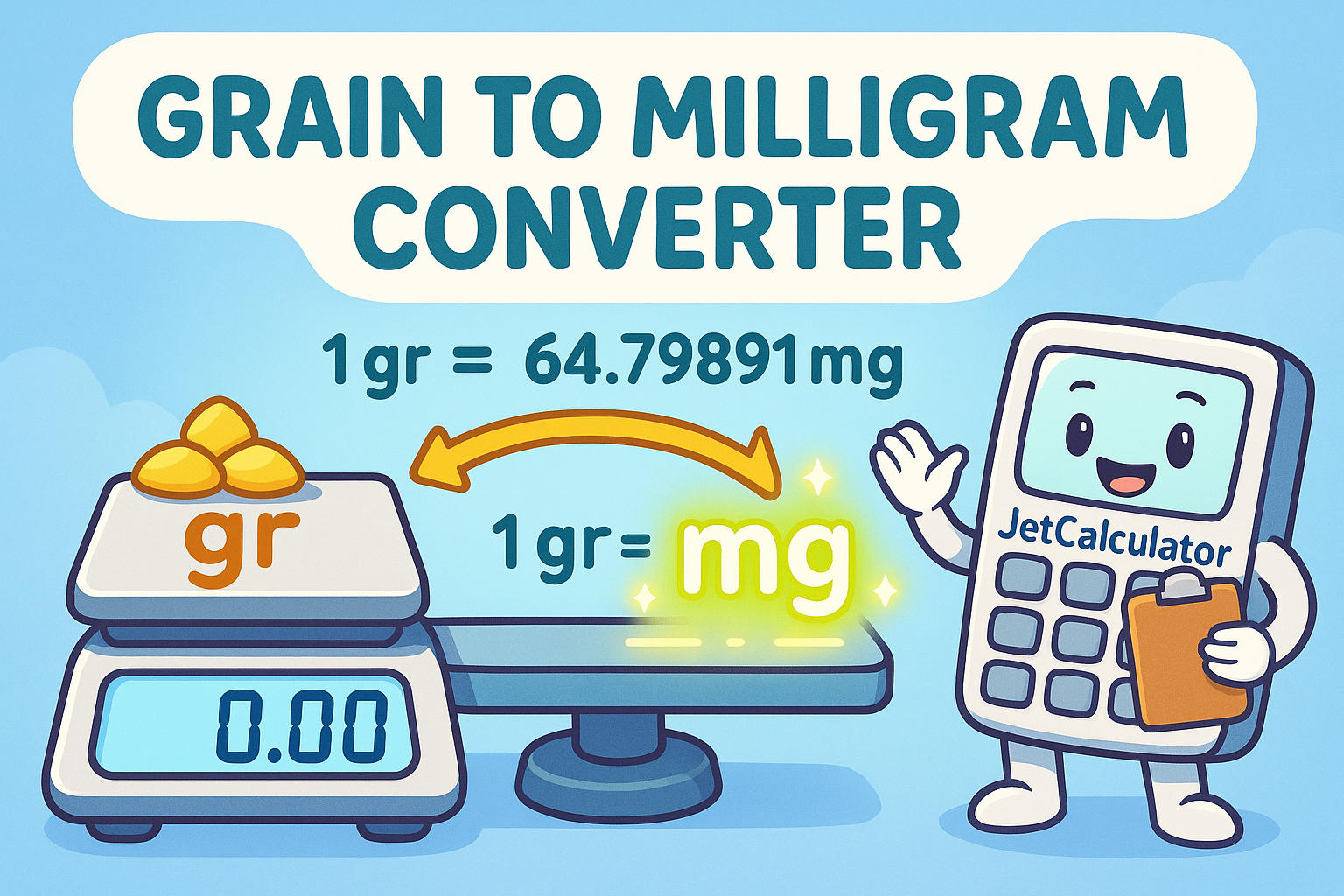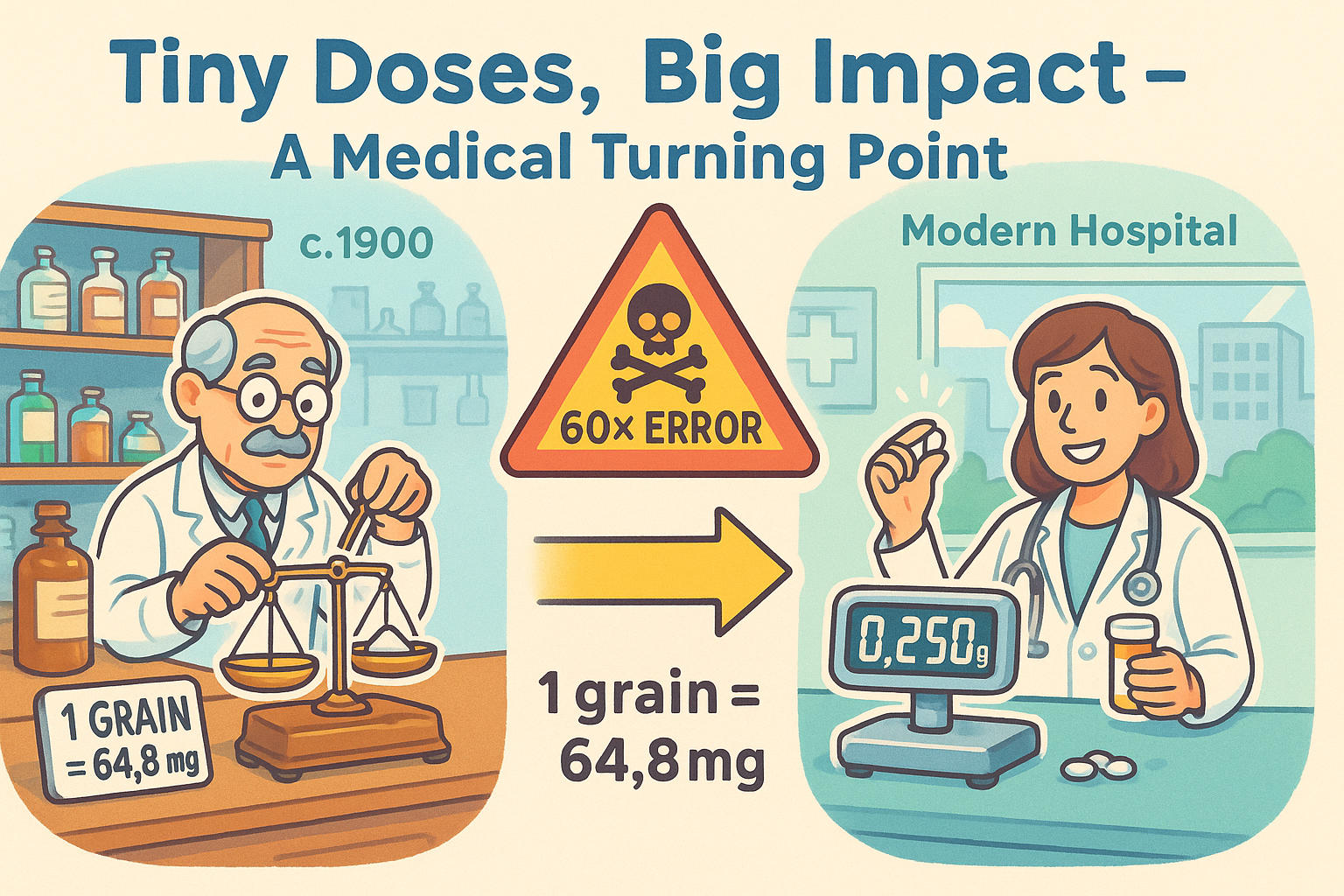grain to milligram – How to convert gr to mg
When working with precision weights, especially in medicine, ballistics, or jewelry, converting grain to milligram is essential. Even a small mistake in conversion can lead to large consequences. With Jetcalculator’s tools like the unit converter accuracy is just a click away.
Grains and Milligrams - What do you know?
The grain (gr) is a small unit of mass from the imperial system, originally based on the average weight of a barley grain. Although largely outdated for most daily uses, it’s still widely used in ammunition (bullet weight), pharmacology (dosage calculation), jewelry (measuring gems and metals).
A milligram (mg) is a metric unit of mass, equal to one-thousandth of a gram. It’s commonly used in medicine, chemistry, and food labeling.
Conversion Formula: gr to mg
To convert from grain to milligram, use this formula:
mg = gr × 64.79891
Example:
Convert 5 grains:
5 × 64.79891 = 323.99455 mg
Use Jetcalculator’s weight converter for instant and reliable results.

Did you know?
-
The most common bullet weight for a 9mm cartridge is 115 grains, which equals 7,451.87 milligrams. This unit allows gun manufacturers to fine-tune performance down to milligram accuracy.
-
A typical dose of paracetamol (acetaminophen) is 500 mg—equivalent to roughly 7.7 grains. Inaccurate conversions could impact patient safety.
-
A milligram might seem tiny, but 1 mg of vitamin B12 is over 400% of the daily required intake. Labels use mg to make precise dietary recommendations.
-
In older American prescriptions, aspirin doses were written as 5 gr (equal to 324 mg), and this style can still be found in vintage medicine bottles.
-
High-precision lab balances can detect changes as small as 0.01 mg, which is less than 1/6 of a grain. This level of precision is vital in drug development.
"Tiny Doses, Big Impact" – A Medical Turning Point
In the early 1900s, the grain was the dominant weight unit in American medicine. Doctors prescribed medications in grains, such as 1 grain of morphine (equal to 64.8 mg). But this system caused confusion when hospitals began adopting metric units. In one widely cited incident from the 1930s, a mix-up between grain and gram led to a patient receiving 60 times the intended dosage.
As a result, major reforms were pushed through, including the adoption of milligrams across most pharmaceutical guidelines in the U.S. The story of this tragic error helped drive safer, more universal metric-based standards still used today.

Conclusion
Converting grain to milligram is essential when precision matters. Whether you're handling pharmaceuticals, ammunition specs, or lab results, understanding how to convert gr to mg ensures accuracy and safety.
With Jetcalculator’s trusted converter you can get reliable answers instantly—down to the last milligram.
Explore More Conversion Tools
-
Milligrams to Kilograms – switch between scales for medication and nutrition
-
Ounces to Milligrams – good for cross-unit cooking and science
-
Grams to Kilograms – move between common metric units easily
Try it now and make every grain count.

